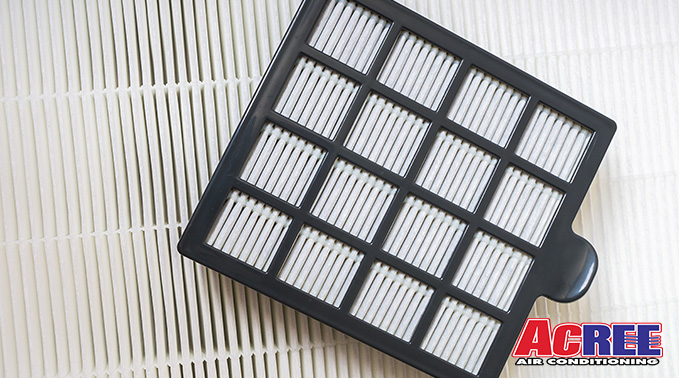
You’re probably aware that you need to change out the filter in your HVAC unit regularly — and if not, you do now — but you might not know just how much variation there is in the different filters available. As it turns out, the type of filter you choose might not seem like a tough decision, but it can end up having a huge impact on the quality of air in your home. They range from almost being too cheap to even warrant a purchase, to being pricey enough where you’d wonder why on earth anything like that could possibly be so expensive!
To aid you in your decision, the experts at Acree Plumbing, Air & Electric have produced a quick Filter 101 that explains what the differences are, why they’re separated like they are, and which ones you should choose based on the needs of your home. While exchanging HVAC filters is a simple process, a more serious problem usually warrants professional help. If one occurs, Acree has a staff of experienced technicians who can diagnose and remedy the situation from start to finish!
The MERV Matters
There’s going to be a number somewhere on the filter, both the one you’ve got in your HVAC filter and the ones you’re looking at. It’ll be somewhere between 1 and 20, but it’ll probably be somewhere around 8 to 12. This is the MERV rating, or Minimum Efficiency Reporting Value, and it indicates how effective the filter is at screening various sizes of particles.
- A 1 on the scale is going to trap only the biggest particles, like pollen or carpet fibers. It’s not going to catch the smaller, less visible ones.
- An 8 is going to usually screen anything bigger than 3 microns, which includes mold, hairspray, and pet dander.
Once you get farther into the double-digits, you’ll start hitting MERV ratings that are generally best served for environments where nearly every particle imaginable needs to be eliminated, like hospitals or places that house sensitive electronics.
The Different Filter Types
Filters aren’t just limited to the different MERV ratings they are given, though. There are several formats air filters come in, and each has its own pros and cons.
-
Disposable
-
- Fiberglass filters are cheap, easy to replace, and — as the name implies — you can throw them away when you change them out. They typically have a MERV rating of 2 or 3, meaning they’re not great.
- Disposable pleated filters are more expensive thanks to being made of cotton or polyester. They’ve got a MERV rating of roughly 6.
- Electrostatic filters are more expensive than the rest of their disposable counterparts, but they use electrically charged particles to trap smaller pollutants.
-
Permanent
- Electrostatic filters are also available in permanent formats. These just need washing every so often, and they can last several years before needing replacement. Their MERV comes in at around 10.
- High-efficiency pleated filters carry a staggering MERV rating in the ballpark of 15, and the cost reflects that performance. Keep in mind, though, that a higher rating isn’t necessarily going to correlate with a better filter for your home. If the screen is too finely constructed, your airflow can actually lose efficiency.
It really comes down to how much you’re willing to pay to replace an HVAC filter, and how often you want to replace it. By determining these two factors, you can give yourself a rough estimate as to the type of filter you think would suit your home the best. If you change the filter out and your home’s air conditioning still isn’t working right, then something else may be afoot. Give the folks at Acree Plumbing, Air & Electric a call at (813) 530-9061 and have an experienced professional come take a look at your HVAC unit!
